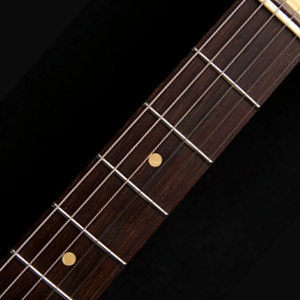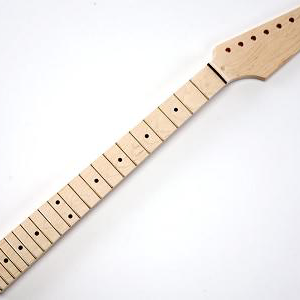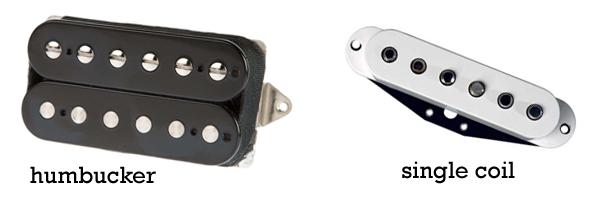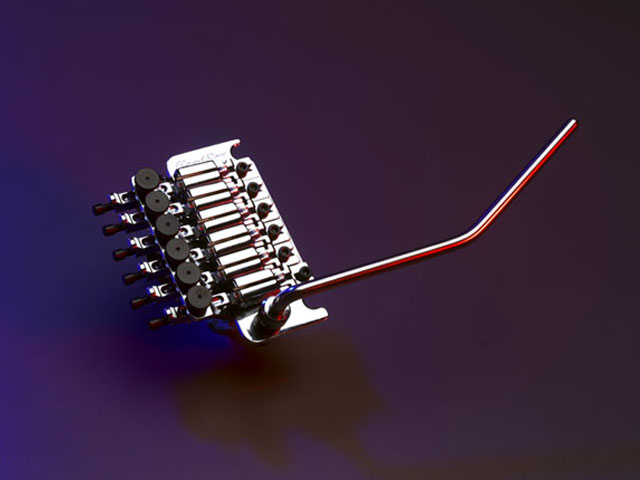First thing to do before you go to a guitar shop
Let's assume you have $300 - $800 to spend on this instrumentVisit guitar website(s) : Ibanez, Fender, Gibson, etc etc. And browse their product catalogs.

I started the list from Ibanez because Ibanez is very diversified and awesome. This brand also has a very wide price range, you can find a very cheap guitar there at Ibanez (but NOT crappy) and the top notch series used by mainstream artists. Then Fender (Fender is too much to explain, one word, SWEET). Then Gibson (one word, heavy). Gibson is the "last" because as a starter, you don't want to spend too much money.
The "etc etc" consists of A LOT of many guitar brands, such as Yamaha, Musicman (Ernie Ball), Vigier, EVH (Eddie Van Halen's design - extremely expensive), Cort, and others, SO MANY. You should start from those three (Ibanez, Fender, and Gibson) before go to those awesome "etc etc".
On those websites you can look at the color (painting), the shape, the PRICE, and study the detailed specification. Cultivate as much information as you can before you go to a real music store.
Check on the demonstrations about the series you're interested in. You can search that on YouTube, or probably within the website of that particular guitar brand. A taped demo is somewhat "not real", sort of speak, because, well, it was taped, and going through video and audio editing. But, you'll get some amount of idea of that certain guitar series before you try it live.
About your FIRST electric guitar :
- You should choose your first guitar to have 24 frets, SHOULD.
- You can base the guitar brand (and series) on your favorite musician's/artist's instrument(s).
- You should choose your first electric guitar to have a dark colored fingerboard. So that it won't look "dirty" too fast. Usually, it's rosewood fingerboard type.
Fender usually uses maple type, because it's "harder", thus giving the, sort of, "twangy" feels and some longer sustain, maybe.
Rosewood has more pores, so it's "softer", kinda. You can compare them yourself the bright and the dark fingerboard then. See if my claims are "correct".
The thing I wanna emphasize in this is about "reducing" the stain maintenance on the fingerboard. Therefore, you should pick the dark one first. Later on, you can buy the bright-fingerboard ones.

- You should choose your first guitar to have a one-way tremolo bar. Because it will be easier to replace the strings and to do other maintenance afterward. An electric guitar without any tremolo bar is not recommended, because the "essence" of electric guitar is in that holy bar.
- The pickups: it's very subjective here (between single-coil and humbucker). You'll get the idea of them at the store (or on YouTube, find that difference from demo videos). The main thing to pay attention is the output ratio. Um, just ask the people which working at the store then, and politely ask them to play the guitar with different pickups setting. These pickups have different friggin' brands, so complicated. Again, it's subjective, depends on your taste.

Narrow down your guitar series list according to your gathered specs info and price, then go to a music store. Should be like, 3 series, max of 5.
Second, in a guitar shop or music store
Find the most famous musical instrument store in your city, usually they have the most "complete" guitar brands and series in their stock. You can ask your friends or family about that, the address and all.
Most of the time, the music store owner(s) has (have) some (either good or bad) relationship with other music store owners/pro-musicians/music instructors. If you like to chat with complete strangers, this is a good chance for building your knowledge about music and relations. Just don't be too "needy", if they're busy, don't disturb them.
Anyway, you might want to start with chatting with the salesman/saleswoman, usually they're also some good music players/practitioners, usually.
If they (the sales/owner) do not recommend the series list you brought, that's OK, because they already have knowledge about their products stock. But still, you have the "obligation" to try on your list. Do that, then compare them with their recommendations. Most of the time, their recommendations will be better, in overall quality and price. Remember to ask for DISCOUNTS.
When you try the different guitars, pay attention at these
Before you plug the guitar to an amplifier :
- Strum or do some riffs on the unplugged electric guitar. If it's "loud" then it's (most of the time) good. Meaning that the guitar body design accommodates longer sustain - larger output. Do that from the lowest frets to the highest. No need to impress anyone, just strum the sh*t out of that guitar.
- Slide your left hand on the guitar neck, up and down. Feel the neck of the guitar. The smoother it goes, the better the quality of a guitar.
Then plug the guitar to an amplifier :
- Max the volume and tone on that particular guitar, then use a clean setting on the amp. Put your fingers away from the strings, you'll hear the noise. Then try the pickups switch. If you hear small amount of noise and no "click" sound every time you move the switch, then that guitar has a GOOD wiring and component quality.
- Try it out again with the distortion setting on the amp.
- Then riff the hell out of that guitar with different amplifier effects.
- Try to move the volume knob up and down while you riff that guitar. If there's no "scratching" sound, then it's GOOD.
- Try the tremolo, just jiggle it. Ah yeah. Any road, you need to pay attention at the guitar tuning after the "jiggling". If the guitar tuning stayed pretty much the same, then that guitar is GOOD.
After you make other people in that store "deaf," ask how to do maintenance of that particular guitar you fall in love with, wha?
If it's "easy" then THAT'S YOUR FIRST GUITAR. Wooo!
Ask for the DISCOUNTS, the warranty and all.
Anyway, I would recommend your FIRST GUITAR price range to be around $150 - $500. Above that, DON'T buy it. Because you'll need some more money to buy external gears of an electric guitar. Below that, be super extra careful.
An electric guitar also needs some other gears, I highlighted the most necessary gears with bold text :
- Some guitar picks - very cheap.
- Guitar bag/guitar case - around $10 - $100.
- Strap(s) - for holding the guitar while you're playing it standing up, and a bit of fashion. Can be around $5 - $100.
- Amplifier(s) - 30 watts amp will be enough, around $150 - $350.
- Pedal amp FX switch or external stompbox FX(s) or external digital FX(s) - varied.
- The guitar stand, or hanger - around $10 - $100.
- The cables - varied.
- The strings liquid thingy, to clean the strings and slow down the corrosion - very cheap.
- Extra strings set(s) - varied.
- Guitar tuner, usually comes with the amp or a digital FX, you can also buy it separately - varied.
- Audio recording and video editing software - varied. There are free wares (or the built-in applications in your operating system) to paid premium wares, for audio-video hobbyist.
Why do I need this? I'll explain it below on the "About your playing" section.
About the lessons :
You should have a real life guitar instructor, either as a private tutor or just to exchange opinions. Music is unlimited, you can explore so much uncountable experience and feeling. The instructor will guide you how to play guitar. If you "just" watching video or reading tabs, sometimes it's just not the same as there's somebody there to guide you.
I was a guitar instructor, you know, writing things on whiteboard, drawing so much cartoons (what?), doing demos and stuffs. But, not so much anymore, since I'm occupied with something else. But, I'll do that again, perhaps. In those days, I drew cartoons on whiteboard to distract the students away from boredom, and I also did stand ups, few times. It psychologically kept everything to be learning-conducive.
You should find in your city a guitar course/class, take some lessons, that's important. There're online instructors too, you can google them or bing them. Mr. Paul Gilbert gives online lessons and teaches online class, I think. Also search his lesson and stuffs. He's an awesome guitar instructor and musician.
About your playing :
- You SHOULD make a video about your guitar playing. Post it on YouTube (YT), no matter how uninteresting it will look, you'll have some idea about doing gig in front of live audience. Then you'll eventually break some boundaries of yourself.
This is why you need audio/video software above.
It's not a mandatory thing to do by the way. - Doing covers are great to enhance your musical approach and techniques.
- Then compose your own tune and songs.
If you want to be a YT pro video maker, it's TOTALLY a different story then "just" posting videos. You need real focused thoughts for that. Think about your software, gadgets, gears, and marketing funds, the "scenarios", your "politics" and all, then the revenues you'll get from YT (Google) and other offerings. Very interesting, but really, you have to be focused. And surely, you'll need a solid team.
You can find the specific tutorials about that from YT "stars". Few of them shared their knowledge and experiences about video making and marketing. Maybe.
It's different between learning to be a professional video maker and attention whore.
Choose your path wisely. Sort of.
In Conclusion
The things you need to pay attention at, are the:
- Number of frets
- Material color and type of the fretboard
- Tremolo bar
- Internal component wiring — test it using an amplifier
- Pickups — test it using an amplifier
- Body of the guitar (material and such)
- Overall design and painting
OK that's it. I hope you'll get your most suitable and affordable guitar.
See ya!
If I may suggest, avoid buying your FIRST musical instrument, especially the ELECTRIC GUITAR online. For guitar effects, amplifier, picks and other supporting hardware and software, you can do that. You can buy guitar online only if you have some decent knowledge about it.
Trying the guitar you're gonna buy is the important step of choosing your FIRST guitar.





No comments:
Post a Comment
Tell me what you think...